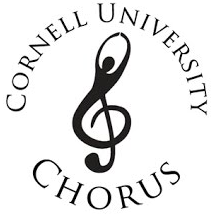Susan Botti's Cosmosis
Emily Higgins '15
From the moment we opened the thick, glossy scores which encapsulate Susan Botti’s Cosmosis, we all knew this would be an unforgettable musical undertaking. It was apparent that Cosmosis was a dramatic change of pace, especially considering that we were fresh from performing Haydn’s Harmoniemesse with the Glee Club. Was it the entirely spoken first movement or the requirement that we make “space sounds” at the conclusion that tipped us off?
Cosmosis is the setting of an eponymous poem by May Swenson, inspired by a child’s question in a Skylab experiment about whether a spider could spin a web in space. Swenson mythicizes a common cross spider named Arabella who attempts to do just that. This setting of the work for a treble choir, wind ensemble, and a soprano soloist “narrator” was commissioned from Botti in 2005 and first performed at the University of Michigan. Botti uses Swenson’s shape poem, Overboard, as a percussive prologue to the main tale. Overboard consists of many repetitions and permutations of the line, “What throws you out is what drags you in,” foreshadowing Arabella’s daunting and possibly doomed task. In the following movements, The First Night, Interlude, and The Second Night, she depicts Arabella’s struggle, initial triumph, and eventual demise with a fantastical landscape of sound. The middle section is a kaleidoscope of emotion-hope, fear, striving, and exhilaration embodied by a giddy whirl of notes. The final sequence is truly harrowing: Arabella is proclaimed dead, her energies spent on the unyielding void, and as she floats through the vacuum the singers mimic a radio being tuned to different frequencies, catching snippets of human noise being broadcast from Earth. These sounds ultimately vanish and nothing remains but the hiss of static- she is too far from home to hear even the echoes of other living creatures.
We began learning Cosmosis with our current director, John Rowehl, while in the throes of searching for a new permanent director (Scott Tucker’s successor). Each of the top three candidates for the position led a rehearsal with both ensembles. They all worked on Cosmosis with us as a test of their skills at teaching complicated new repertoire. While it was nerve-wracking to meet our future director in this context, it was certainly illuminating to crunch through the wild, seemingly nonsensical chords of Arabella’s tale under the guidance of four different conductors.
After returning from winter break, we gained ten new women and had to prepare for tour and, more immediately, our mid-February trip to the Harvard Treble Festival. The two weeks between Harvard and the CU Winds concert at which Cosmosis would be performed were filled with intense rehearsing. We could finally focus exclusively on Arabella! Alternating between working jointly with the wind ensemble and privately drilling the shouted rhythms of the prologue, fractured melodies of the middle sections, and coordinating the “radio waves” and “space sounds” of the final lines, our intrepid arachnid took our imaginations (and schedules) by storm.
The concert also featured a talk by Cornell’s expert on arachnids and a spider-themed slideshow. The wind ensemble performed several other pieces before Cosmosis, so we were able to watch the majority of their very excellent concert. We particularly enjoyed witnessing our own John Rowehl accompany them on the piano, although it seemed dangerously likely that the keys would catch on fire from his exceptional playing! Susan Botti arrived at Cornell several days before the concert to polish our efforts and coordinate her solo performance with the choir and instrumentalists. Her larger-than-life personality and astonishing creative vision brought the piece to fruition in our last rehearsals. The ardor with which she approached her narrative role inspired us to put aside any timidity and, as she advised, “really go for it!” The result of these labors was a worthy tribute to Arabella and her dreams of greatness, whatever the outcome for the spider.
